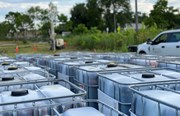Common Thermal Challenges That Require Rapid Adaption
By: Steffen GriepkeAs every environmental consultant knows, even the most carefully researched and meticulously planned projects cannot anticipate every possible scenario. But when unexpected challenges arise, can you adapt an in situ thermal remediation implementation?
The answer is yes, but with a caveat. To quickly assess the issue and identify a solution that will get the project back on track (without dramatically increasing costs or the project timeline), it’s important to work with experienced thermal contractors.
In next week’s webinar, Real-Time Solutions to Unexpected Challenges Encountered During Thermal Remedy Implementation, I’ll be discussing this topic in more detail, and covering lessons learned from more than 100 ERH, TCH and SEE projects. Join me if you have questions you’d like to ask—there will be a Q&A at the end.
Heating up the subsurface is no small task—once the soil is cooking, you better keep the system operating until it is done. Turning off the heat is not an option. In today’s blog post, we’ll cover some of the common challenges that arise with thermal projects that require fast adaption.
First, why is timing so important when adapting your thermal remedy?
Due to the aggressive nature and high daily operating cost of a thermal remedy, operational issues must be addressed immediately, typically within hours or days rather than weeks. Extended system shutdowns can lead to fugitive emissions, and each day of standby for a thermal system can cost thousands of dollars and may set back the total progress. Additionally, remedies implemented in populated settings and sensitive environments often draw a high degree of public focus. If problems are encountered, rapid reactions and responses are needed to ensure continued operation of the thermal system.
Many operational challenges are related to the chemicals being treated. Thermal remedies are source zone treatments, and it is not uncommon that the contaminant mass loading on the treatment system is an order of magnitude more or less than what was estimated in the site conceptual model and design. We have treated sites where the daily contaminant removal rate exceeded 25,000 lbs/day, so selection of appropriate treatment system components is critical.
Health and safety concerns are another challenge that often must be addressed quickly, such as vapor concentrations in the vapor treatment system that easily can exceed Lower Explosion Limits. The very harsh thermal environment may require upgrades to existing components, materials of construction and/or operating systems while the site is still operating, if actual conditions are more aggressive than anticipated.
The approach may also be influenced or changed when considering…
- High temperatures
- Extreme pH
- Mobilization of metals
- Addressing emulsions and biological fouling issues
- Formation of hydrolysis, pyrolysis or oxidization by-products as the site is heating
It can be challenging to select appropriate construction materials for the aggressive environment that develops when mixtures of chemicals are heated and reactions are triggered.
As the temperature increases below ground, the site conceptual model and thermal concept may also change.
Is groundwater flowing a bit faster along the upgradient edge of the site or the sand layer at the bottom of the treatment zone is cooling more than what was envisioned? Or maybe shallow water is flooding the extraction system?
In these situations, modifying the system to provide more targeted heating may be necessary during operation. Either by adding more electrodes or heater wells, by mobilizing a small steam boiler or by installing supplemental extraction wells.
There are a lot of potential disruptions to a thermal project, and they require immediate intervention by experienced experts to stay on track for meeting the remediation goals.
If you’d like to learn more about how those changes are identified and addressed, I’ll be sharing real-life examples in next week’s webinar, Real-Time Solutions to Unexpected Challenges Encountered During Thermal Remedy Implementation.

